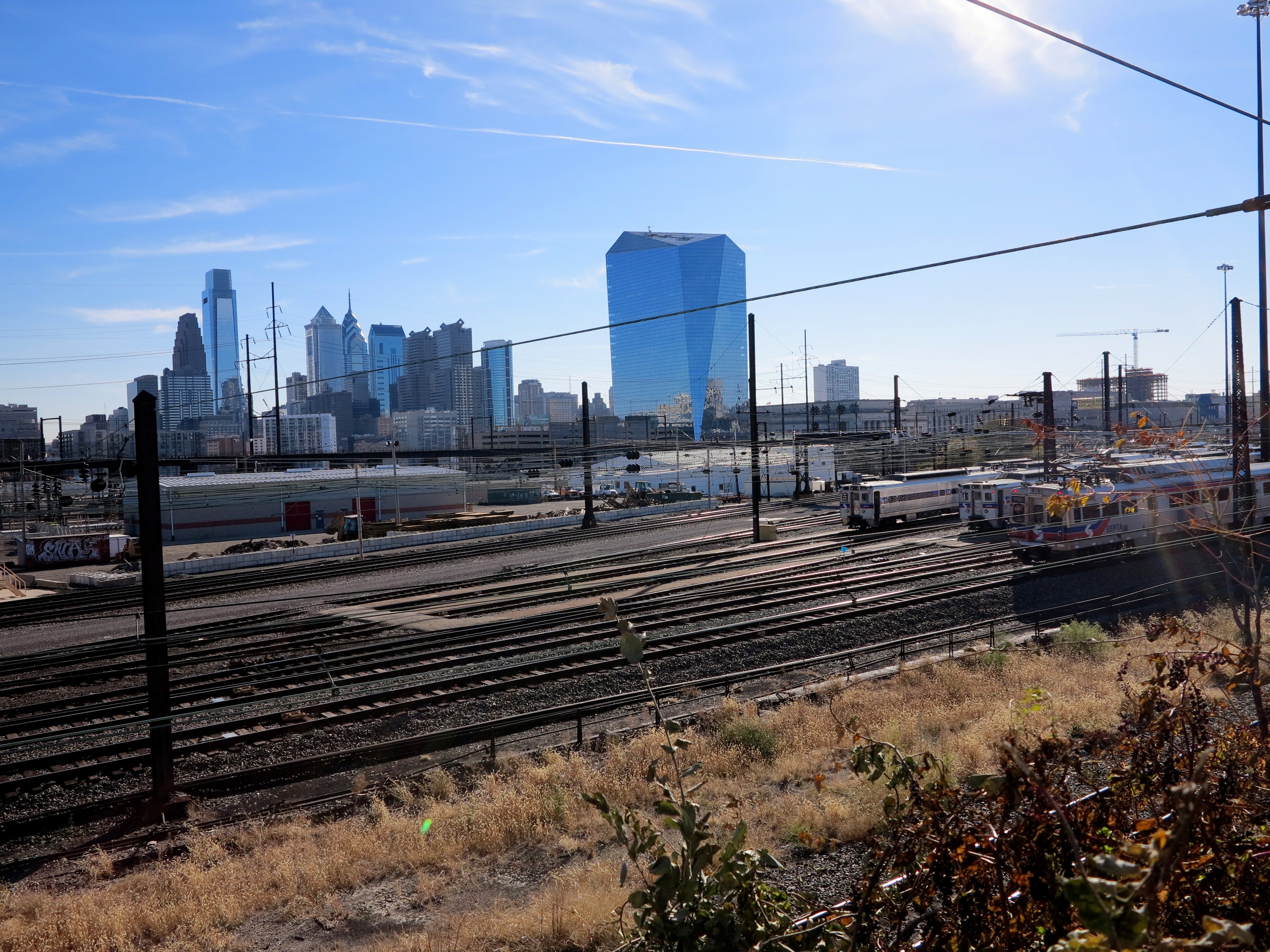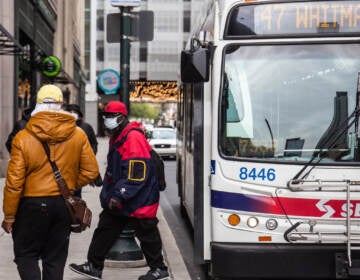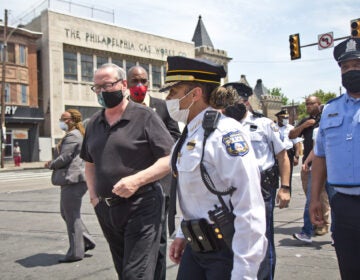Mayor 99: Steal these six ideas from Diaz

If Democratic mayoral nominee Jim Kenney wants to support smarter development and stronger transit, here are six ideas he could poach from Nelson Diaz’ mayoral campaign, offered up in this op-ed by Diaz’s communications and policy director Barry Caro.
If imitation is the sincerest form of flattery, then I’m hoping to be flattered by Philadelphia’s next mayor. As Communications and Policy Director for the Nelson Diaz campaign, I was responsible for actually drafting our candidate’s policy proposals – and there were a number of areas where our progressive ideas led the conversation forward.
Six of our campaign’s ideas, in particular, are things no other candidate was talking about, but that I sincerely hope our next administration adopts as its own. While the Mayor has limited power to enact any initiative by fiat, these six ideas are all achievable with a minimum of approval or, more importantly, spending from other levels of government. They fall in two main areas: Smarter development and better transit.
Smarter development
Inclusionary Zoning
Our proposal was covered in-depth here on PlanPhilly back in March, and is based on a simple idea: That people of all races and income levels benefit from integrated, mixed-income communities. Setting aside some housing units in new developments for lower-income, working class Philadelphians is good in the long run for all of us.
This is a particularly important question for us to face as Philadelphia continues to balance the Center City building boom against the potential for (and, at times, reality of) gentrification. An 80/20 inclusionary zoning plan would significantly soften the burdens that development creates on neighborhoods.
What’s more, because Philadelphia already subsidizes nearly every new housing development in the city through the ten-year tax abatement, we have significant leverage to demand public goods in exchange for public subsidies. Some have argued that Philadelphia’s unfriendly tax environment – particularly our wage and business taxes – makes such a mandate prohibitively expensive for business. But there is real momentum in our housing market already, particularly in the areas where significant housing development is actually occurring, suggesting that large scale residential developments receiving massive public subsidies can absorb this moderate cost right now. This is even more true if the next Mayor can actually start fundamental tax reform; it’s past time for us to make sure we’re getting our money’s worth for subsidies.
Make our vacant lots a top priority and halve the number by 2025
The Land Bank wants to begin aggressively redeveloping significantly more vacant and abandoned property over the next decade. But in many ways their plans aren’t nearly aggressive or fully developed enough. By making our abandoned property epidemic a priority, we can halve the number of vacant lots in Philadelphia by 2025
Much of the difficulty with addressing the situation has sprung from a lack of coordination between government agencies with competing and sometimes mutually exclusive priorities. The Land Bank is theoretically structured to play this role, but won’t be able to achieve it’s full potential unless the next Mayor clearly prioritizes this responsibility and empowers the Land Bank to fully achieve its mission. Hands-on management and a coordinated, multi-agency approach could create powerful momentum behind smart development.
One elegant and, frankly, brilliant, proposal from Councilman Kenney during this campaign makes this proposal even more achievable: splitting land taxes from property taxes. This would create a powerful incentive to the private sector to invest in Philadelphia now, rather than squatting on land and speculating on future real estate prices. I sincerely hope Councilman Kenney would aggressively pursue this campaign proposal should he be elected mayor in November.
Support Drexel’s Innovation Neighborhood – including the Powelton Yard
Redeveloping the rail yards north of 30th Street Station is something of a white whale for Philadelphia. Decking over the entire yards is prohibitively expensive, but the land at that spot should be used for so much more than it is today.
As Drexel has noted with its plan for the adjoining neighborhood, however, that location is ideally suited to be the next great economic engine of Philadelphia. While full redevelopment is a generational challenge, the City needs to take a serious look at what interim or partial steps it can support at the Powelton Yard to start the ball rolling. At the very least, the City should be a co-equal partner with Drexel in the planning process in this area, considering how potentially important that development may be to the city as a whole.
Better Transit
Express Commuter Rail to Central New Jersey and New York City
It is mind-boggling to me that there is no express regional rail service to Trenton, or places like New Brunswick or Princeton in Central New Jersey. Transferring across the platform in Trenton between SEPTA and NJ Transit trains – which end their service runs at the same place – is absurd. It’s far past time to through-run existing Northeast Corridor service on NJ Transit as an express option to Center City.
Though this technically breaks the rules I set out above, because it requires a multi-state operating agreement, I’m including it anyway because it only requires agreement, rather than new infrastructure construction. It requires political will, not significant dollars and cents. By utilizing his influence on the SEPTA board and working constructively with the relevant Governors, the next Mayor can create a win-win for all involved by using our existing infrastructure more efficiently.
The headline for most people here will be service to New York City. But to my mind, especially if paired with redevelopment of the rail yards as described in the third proposal here, the biggest impact may be better ties with the biotechnology and pharmaceutical companies along Route 1 in Central NJ. Philadelphia’s high tech and venture capital based sectors of the economy are severely underdeveloped, and this could help boost both of those substantially.
A better bus network
City buses are too slow and too unreliable. They don’t get nearly their fair share of attention from policy makers, despite accounting for more than half of all SEPTA trips. Considering that they’re the dominant mode of mass transit in our city, and considering how important transit access is to community development, we should prioritize incremental and achievable improvements in service.
Our campaign goal was a minimum 10% increase in speed and a 10% increase in ridership system-wide, with bigger improvements on key routes like Roosevelt Boulevard. Achieving a 10% improvement across the system would require some combination of small steps such as: consolidating stops so that buses are idle less frequently, moving stops to the far sides of intersections, enforcing bus lanes where they exist and creating them where practicable, signal prioritization, and off-board fare payment on express routes.
None of these ideas is revolutionary – SEPTA has already tested many of them – but working in tandem with SEPTA to coordinate, implement, and fund these ideas would take real, consistent leadership across multiple levels of government. One way to start would be a comprehensive plan developed in tandem with SEPTA – similar to ongoing planning efforts for BRT on Roosevelt Boulevard, but on more moderate improvements – that would be the basis for any necessary enabling legislation or administrative decisions at the City or State levels.
10% better buses might not sound sexy, but they’d make a huge difference to hundreds of thousands of riders every day – and eliminate tens of thousands of car trips every day.
Dynamic pricing for street parking
Street parking in Philadelphia is dramatically underpriced. While several candidates, including Councilman Kenney, noted this in terms of residential parking, our campaign was the only one to propose a bolder solution: dynamic pricing for street parking. Right now, it costs just as much per hour to park outside my apartment at 10th and Walnut at 9pm as it does at noon. That’s not the case in the garage on my block – or the PPA garage a block away – to put it mildly. Ideally, prices should better track demand to allow the supply and demand of street parking to come closer to equilibrium.
San Francisco recently experimented with just such a dynamic pricing model in its core business district, and found that fewer cars circled looking for spots, fewer tickets were issued, and overall traffic volume declined as people shifted trips to other transit modes. Philadelphia and the PPA should explore just such a pilot program in Core Center City, and look to expand it citywide if it proves successful.
Councilman Kenney campaigned on a promise to be a bridge between the old and new Philadelphia. By embracing these ideas, along with many of the truly progressive campaign promises in his own platform, he can fulfill that pledge and help Philadelphia continue the positive urbanist momentum of the Nutter years.
WHYY is your source for fact-based, in-depth journalism and information. As a nonprofit organization, we rely on financial support from readers like you. Please give today.






